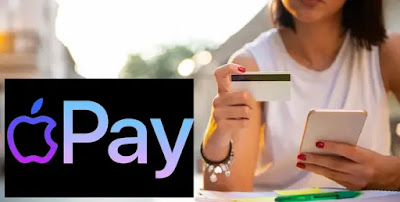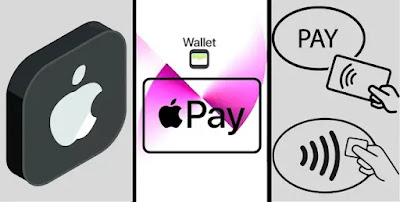Apple Pay default card on iPhone/iPad
Set the Apple Pay default card on your iPhone or iPad by following the steps.
 |
| Apple Pay default card on iPhone/iPad |
Setting an Apple Pay default card on your iPhone or iPad can be done through the Wallet app.
Open the Wallet app, select the card you want to make your default, and tap the information icon in the lower-right corner.
On the next page, tap "Set as Default Card" and you're all set. You can change your default card at any time by repeating these steps.
1. Open the Settings app on your device
Changing your Apple Pay default card is simple and easy. To do so, open the Settings app on your device, navigate to ‘Wallet & Apple Pay’, and select ‘Default Card’. From there, you can choose which card to use when making payments with Apple Pay.
It’s important to remember that the default card will be used for all payments made with Apple Pay until you change it.
2. Select Wallet & Apple Pay from the left-hand menu
 |
| Select Wallet & Apple Pay from the left-hand menu |
1: Apple Card
2: Google Pay
3: Samsung Pay
4: Android Pay
5: PayPal Wallet
6: Venmo Wallet
7: Microsoft Wallet
To select the default card for Apple Pay, users need to open the Wallet app on an Apple device and select "Apple Pay" from the left-hand menu. This will open a list of all available cards and allow users to select which one they would like to be their default.
Once the default card is selected, all future payments will be made with that card unless otherwise specified.
3. Scroll down and tap on Set Default Card
Apple Pay users can change their default card by following these simple steps. To change your default card, first, open the Wallet app on your device and select "Apple Pay" from the left-hand menu.
Once users have opened the Wallet & Apple Pay menu, they can scroll down and select the option for "Set Default Card". This will open a list of the available cards, allowing users to select which card should be their default.
Once the desired card is selected, all future payments with Apple Pay will be made using that card until it is changed.
- Tap on the card you want to set as your default
- Scroll down and tap on Set Default Card
- Confirm your selection
- Tap Done
To set a default card for Apple Pay, open the Wallet app on your device and select the card you would like to make your default. Then, scroll down and tap on the option to Set a Default card Your selection will be applied to all your future transactions when using Apple Pay.
4. Choose a card from the list and tap Set
- Visa
- Mastercard
- American Express
- Discover
- PayPal
- Apple Pay
- Google Pay
If you would like to use another card as your default for Apple Pay, open the Wallet app on your device and select "Apple Pay" from the left-hand menu. From here, you can select which card you would like to be your default.
Apple Pay users can now select and set their default card from the list of available cards. All that is required is to choose a card from the list and then tap the 'Set' button.
This feature has been designed to make it easier and more convenient for users to choose their preferred card for Apple Pay.
5. Confirm your choice by tapping done Apple Pay's default card
When selecting an Apple Pay default card, it is important to confirm your choice by tapping "Done" on the device. Doing so ensures that the right card has been chosen as the default payment option for Apple Pay.
This will ensure that all future transactions are done with this card, making it fast and easy to make payments using Apple Pay.
6. Your new default card will now be used whenever you make a purchase with Apple Pay
Apple Pay has recently changed its default card setting, meaning that whenever you make a purchase with Apple Pay, your new default card will be used. This feature is designed to make it easier and faster for customers to complete their transactions.
Additionally, this update also provides customers with greater control over their spending, allowing them to manage how and when their default card is used.





